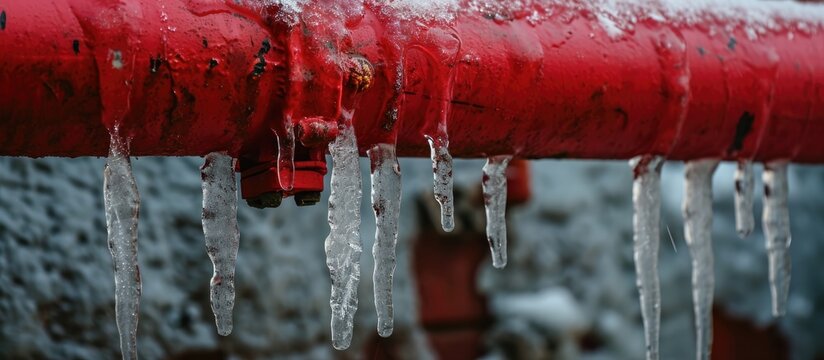Crucial Advice for Preventing Frozen Plumbing in Winter Conditions
Crucial Advice for Preventing Frozen Plumbing in Winter Conditions
Blog Article
What're your insights and beliefs about How to prepare your home plumbing for winter weather?

Cold weather can ruin your plumbing, particularly by freezing pipelines. Here's just how to avoid it from happening and what to do if it does.
Intro
As temperatures drop, the threat of frozen pipelines boosts, possibly resulting in pricey repair work and water damages. Recognizing just how to avoid frozen pipelines is vital for homeowners in chilly climates.
Comprehending Frozen Pipes
What causes pipelines to freeze?
Pipes freeze when subjected to temperature levels below 32 ° F (0 ° C) for prolonged periods. As water inside the pipelines ices up, it broadens, taxing the pipeline wall surfaces and possibly triggering them to rupture.
Dangers and damages
Icy pipelines can cause water disruptions, property damage, and expensive repair work. Burst pipes can flooding homes and trigger substantial structural damage.
Indicators of Frozen Piping
Determining frozen pipelines early can avoid them from bursting.
Just how to identify icy pipes
Look for reduced water circulation from faucets, uncommon smells or noises from pipelines, and visible frost on revealed pipes.
Avoidance Tips
Shielding susceptible pipes
Cover pipelines in insulation sleeves or utilize warm tape to protect them from freezing temperatures. Concentrate on pipelines in unheated or exterior areas of the home.
Heating methods
Keep interior spaces sufficiently heated, particularly locations with plumbing. Open up cabinet doors to permit cozy air to circulate around pipelines under sinks.
Safeguarding Exterior Plumbing
Yard hose pipes and outdoor taps
Disconnect and drain yard hose pipes prior to wintertime. Mount frost-proof spigots or cover exterior taps with insulated caps.
What to Do If Your Pipelines Freeze
Immediate activities to take
If you think icy pipelines, keep faucets available to ease stress as the ice thaws. Use a hairdryer or towels soaked in warm water to thaw pipes gradually.
Long-Term Solutions
Structural modifications
Take into consideration rerouting pipes away from exterior walls or unheated locations. Include extra insulation to attics, basements, and crawl spaces.
Updating insulation
Purchase premium insulation for pipes, attics, and wall surfaces. Proper insulation assists keep constant temperatures and decreases the threat of icy pipes.
Final thought
Preventing frozen pipes needs aggressive measures and fast feedbacks. By understanding the causes, signs, and preventive measures, house owners can shield their pipes throughout winter.
5 Ways to Prevent Frozen Pipes
Drain Outdoor Faucets and Disconnect Hoses
First, close the shut-off valve that controls the flow of water in the pipe to your outdoor faucet. Then, head outside to disconnect and drain your hose and open the outdoor faucet to allow the water to completely drain out of the line. Turn off the faucet when done. Finally, head back to the shut-off valve and drain the remaining water inside the pipe into a bucket or container. Additionally, if you have a home irrigation system, you should consider hiring an expert to clear the system of water each year.
Insulate Pipes
One of the best and most cost-effective methods for preventing frozen water pipes is to wrap your pipes with insulation. This is especially important for areas in your home that aren’t exposed to heat, such as an attic. We suggest using foam sleeves, which can typically be found at your local hardware store.
Keep Heat Running at 65
Your pipes are located inside your walls, and the temperature there is much colder than the rest of the house. To prevent your pipes from freezing, The Insurance Information Institute suggests that you keep your home heated to at least 65 degrees, even when traveling. You may want to invest in smart devices that can keep an eye on the temperature in your home while you’re away.
Leave Water Dripping
Moving water — even a small trickle — can prevent ice from forming inside your pipes. When freezing temps are imminent, start a drip of water from all faucets that serve exposed pipes. Leaving a few faucets running will also help relieve pressure inside the pipes and help prevent a rupture if the water inside freezes.
Open Cupboard Doors
Warm your kitchen and bathroom pipes by opening cupboards and vanities. You should also leave your interior doors ajar to help warm air circulate evenly throughout your home.

I am very involved in How To Avoid Freezing Pipes and I hope you appreciated the entire post. Sharing is nice. Helping people is fun. Bless you for being here. Come back soon.
This Post Report this page